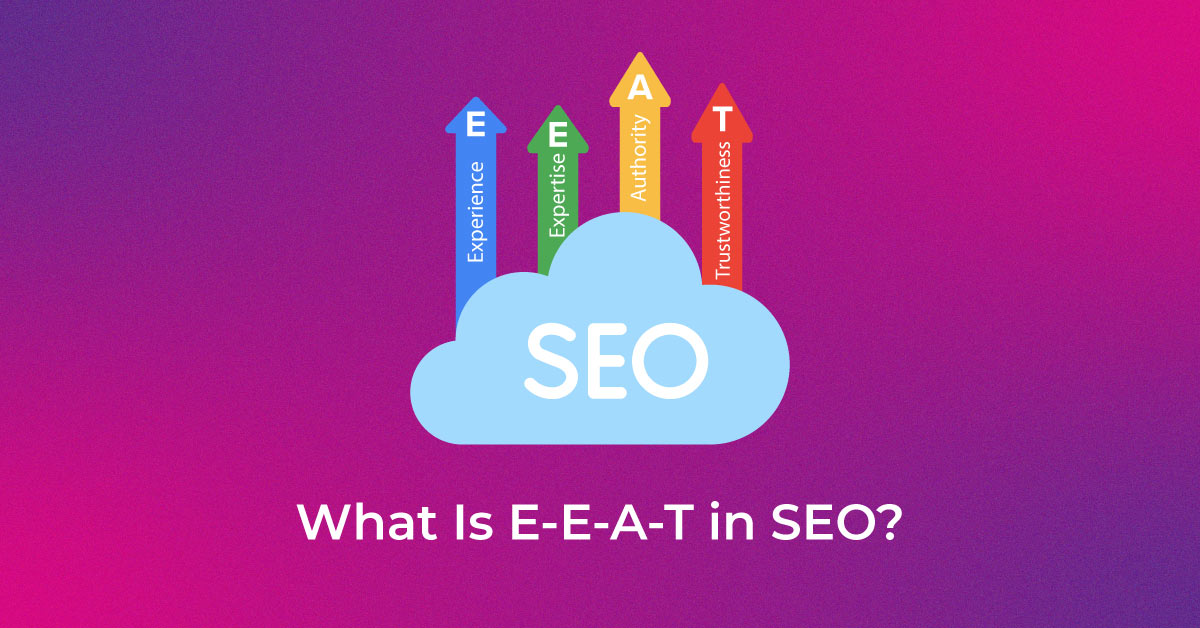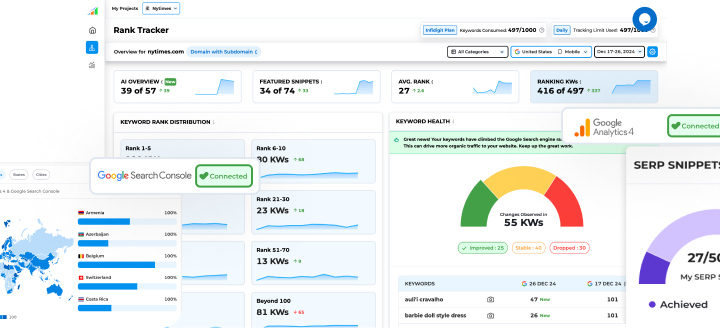Introduction to GTM Strategy
A well-crafted go-to-market (GTM) strategy is critical for businesses looking to successfully launch new products or services in today’s competitive market. It acts as a roadmap, aligning your team’s efforts across marketing, sales, and customer success to ensure a smooth and impactful product launch. One important aspect of any GTM strategy is leveraging SEO services to drive organic traffic and increase visibility for your offering. By optimizing your content for search engines, you can attract your target audience and generate quality leads, setting the stage for a successful market entry. In this blog, we’ll break down the steps to create a winning GTM strategy and provide templates to guide your process.
What is a Go-To-Market (GTM) Strategy?
A Go-to-Market (GTM) Strategy is your action plan for launching a new product or service to the market with a clear roadmap to success. It pinpoints who your target customers are, the value you’re offering them, and the tactics you’ll leverage to reach them. GTM plans are crucial for new products, but they’re also valuable for introducing existing offerings to new segments, or even when rebranding and relaunching your company. Consider it the blueprint for market entry or expansion, designed to secure a competitive edge and enable a product or service to thrive in a new or existing marketplace.
Decoding the GTM Jargon
Understanding the lexicon surrounding Go-to-Market strategies is essential to navigate the complexities of bringing a product to market. Here’s a breakdown of frequently used terms:
- Target Audience: The specific group of consumers you aim to reach with your product or service.
- Value Proposition: The unique benefits and value your product or service offers to the target audience.
- Market Segmentation: The process of dividing a market of potential customers into groups, or segments, based on different characteristics.
- Channel Strategy: The selection of the most effective pathways to sell and distribute your product, whether through direct-to-customer channels, partnerships, or third parties.
- Customer Acquisition Cost (CAC): The cost associated with convincing a potential customer to buy your product or service.
- Customer Lifetime Value (CLV): The total revenue a business can reasonably expect from a single customer account throughout their business relationship.
- Product-Market Fit: The degree to which a product satisfies strong market demand.
With this jargon decoded, you can better understand the components of a GTM strategy and how they affect your business’s success in reaching new or existing markets.
Understanding the Core Elements of a Go-To-Market Strategy
1. Product or Service Overview
Your product or service overview should encapsulate what you’re offering and its key features that set it apart in the market. This encompasses:
- The problem it solves or the need it addresses.
- The unique selling points (USPs) that differentiate it from competitors.
- The technology or methodology powering the product or service.
- The existing or potential patents and intellectual property that add value.
- Customer experiences or use cases demonstrating its effectiveness.
A thorough overview not only benefits your target customers but also aligns your internal team’s understanding and strategic approach.
2. Target Audience
Identifying your target audience is a cornerstone of any GTM strategy. By recognizing who will benefit most from your product, you can tailor your marketing and sales strategies to meet their needs. Consider the following to fine-tune your target audience:
- Characteristics such as age, gender, income level, education, occupation, or geographic location.
- The specific problems, pain points, or needs your product or service addresses.
- Consumer behavior, including purchasing habits and preferred channels for information and shopping.
- Psychological factors such as attitudes, values, interests, or lifestyle that can influence decision-making.
Successful identification of your target audience will not only sharpen your focus but also increase the efficiency of your marketing budget and resources.
3. Market Research & Insights
Conducting market research is pivotal to unearth valuable insights about the demand for your product and the ecosystem in which it will launch. To obtain a comprehensive view, you should:
- Analyze market size, growth projections, and trends that can impact your offering.
- Assess customer needs and preferences through surveys, focus groups, or interviews.
- Observe and interpret the broader economic, political, and social factors influencing your market referred to as PEST (Political, Economic, Social, Technological) analysis.
These insights inform not just your GTM strategy but also product development, ensuring that your offering is as compelling as possible to the target audience.
4. Competitive Analysis
In assessing your competitive landscape, it’s important to identify not just who your competitors are, but also their strategies, strengths, and weaknesses. Here’s how to dive into competitive analysis:
- List direct and indirect competitors, including any alternatives customers may use to solve their problem.
- Compare product features, quality, pricing, marketing tactics, distribution channels, and customer service.
- Determine competitors’ market share, growth trajectory, and customer perceptions.
- Use frameworks like SWOT (Strengths, Weaknesses, Opportunities, Threats) to analyze competitor positioning.
- Solicit customer feedback to understand why they choose certain products over others, revealing competitors you may not have considered.
By learning from your competitors, you better position your offering and refine your GTM strategy—not by imitation but by understanding what works and what gaps you can fill.
5. Messaging & Positioning
Crafting your messaging and positioning involves articulating the value your product provides in a way that resonates with your target audience and distinguishes you from the competition. It should:
- Clearly convey the benefits of your product or service, not just features.
- Align with the needs, desires, and pain points of your target market.
- Deliver a consistent message across all channels that builds your brand narrative.
- Reflect the brand’s tone, personality, and core values to establish a unique identity.
- Utilize customer testimonials or success stories to strengthen credibility.
Your messaging and positioning pave the way for meaningful connections with customers and create a lasting impression that sets the tone for their experience with your product.
6. Pricing Strategy
Your pricing strategy ties directly into your product’s perceived value and your company’s overall market position. To fine-tune this crucial element of your GTM strategy:
- Evaluate cost-plus, competitive, value-based, and tiered pricing models to find the best fit.
- Consider psychological pricing tactics, like charm pricing, to influence buyer behavior.
- Assess what the market will bear in terms of pricing by studying your target audience’s willingness to pay.
- Balance revenue goals with market entry strategies—sometimes penetration pricing may be necessary to gain market share.
- Monitor and adapt your pricing strategy based on market response, competitive moves, and changing costs.
Remember, pricing is more than a number—it’s a signal to the market about who you are as a brand and the value you provide.
7. Sales & Distribution Channels
Choosing the right sales and distribution channels is pivotal in ensuring your product reaches your target market effectively. Options range from direct selling, to online marketplaces, or using distributors and retailers. Consider the following:
- Direct channels may provide higher margins and closer customer relationships, but they require robust marketing and customer service capabilities.
- Retailers and distributors can extend your reach but may diminish your control over brand presentation and consumer pricing.
- Online channels offer wide accessibility, though competition can be fierce, and you may need strategies to drive traffic and conversion.
- Selecting a hybrid approach could allow you to benefit from the strengths of multiple channels.
- Each choice impacts the buyer’s journey, so aim to provide a seamless purchasing experience regardless of channel.
Remember, the best sales and distribution channels for your product depend on where your customers are and how they prefer to shop.
Difference Between Go-to-market Strategy vs Marketing Strategy vs Marketing
Plan in a data-driven fashion, include the most up-to-date and relevant statistics, facts, and figures available, while adhering to the given style guide.
The differentiation between Go-to-market (GTM) strategy, marketing strategy, and marketing plan often appears subtle but understanding the nuances can be critical for business success. Here is an in-depth comparison based on data-driven insights:
Go-to-Market Strategy:
- A GTM strategy is generally a short-term, one-time plan specifically crafted for launching a product or breaking into a new market.
- It typically focuses on understanding the unique value proposition of a single product and finding the most direct and effective route to get it to customers.
- Data indicates that businesses employing a well-defined GTM strategy can increase their market penetration by up to 20% and speed up new product adoption.
Marketing Strategy:
- In contrast, a marketing strategy is a long-term, ongoing effort that underpins all marketing activities of a business.
- The strategy usually encompasses a broader range of objectives than a GTM strategy, diving into all products or services offered and outlining a sustained competitive position in the market.
- According to a survey by CoSchedule, marketers who document their strategy are 313% more likely to report success compared to those who don ‘t.
- The marketing strategy considers multiple channels, customer relationships, brand positioning, and often involves a detailed analysis of competitors and industry trends.
Marketing Plan:
- A marketing plan is a practical, actionable document or blueprint derived from the marketing strategy.
- It details the specific initiatives, campaigns, timelines, budgets, and resources that will be utilized to achieve the goals set out in the marketing strategy.
- Research from the Content Marketing Institute reveals that 65% of the most successful businesses have a documented content marketing plan, indicating the effectiveness of translating strategy into detailed action plans.
Distinctions Between These Three Concepts:
- To illustrate, consider the introduction of a new tech gadget. The GTM strategy will involve decisions about the initial target market, pricing strategy, and sales channels to quickly establish a foothold. These might be supported by competitive analyses like those by IDC or Gartner, which provide market insights crucial for the GTM phase.
- The marketing strategy for the tech gadget takes a broader view, focusing on sustaining the product’s life cycle, scaling up the market reach, and building brand loyalty. Data from Statista or the Consumer Technology Association can influence long-term decisions on trends and consumer behaviors.
- The marketing plan, then, will lay out a roadmap for campaigns across various media platforms , allocating budgets for each campaign, setting timelines for execution, and measuring campaign performance metrics like conversion rates, which an Adobe survey found are used by 90% of successful marketers to evaluate the effectiveness of their marketing efforts.
- Furthermore, the marketing plan is the actionable component which allows for adjustments based on real-time data, such as website traffic and social media engagement statistics, ensuring that the marketing strategy remains responsive to the market dynamics.
In summary, a GTM strategy is your initial market entry playbook, a marketing strategy is your overarching vision for continuous market presence, and a marketing plan is your concrete step-by-step guide to making the marketing strategy happen. Each serves a distinct purpose and, when executed correctly, works together to ensure product success and brand growth in the competitive business landscape.
Steps to Build an Effective Go-To-Market Strategy
Step 1: Market Research and Analysis
Start your go-to-market strategy with thorough market research and analysis to ensure there’s a demand for your product and understand the landscape you’re entering. Include the following steps:
- Analyze industry reports and market forecasts to get a macro-perspective of your sector.
- Perform qualitative research by talking to potential customers to gain nuanced insights.
- Use quantitative methods like surveys and data analysis to understand patterns and preferences.
- Review secondary data sources for information on consumer behavior and competitor performance.
- Draw conclusions about market viability, customer needs, and potential barriers to entry.
These insights will lay the groundwork for informed decisions throughout your GTM strategy.
Step 2: Defining Product-Market Fit
To define product-market fit, look for the intersection where your product meets a significant need within your target market:
- Validate that the problem you’re solving is important to your potential customers.
- Gauge interest through prototypes or beta testing to see if your solution resonates.
- Obtain user feedback to tweak your product’s features and ensure it fits market demands.
- Consider if your product is a “must-have” rather than a “nice-to-have” by evaluating its urgency and necessity to the customer.
- Iterate rapidly in response to feedback to make sure your product aligns with market needs before scaling up marketing and sales efforts.
Defining this fit is an ongoing process; it’s not a one-time milestone, but rather a continuous alignment with evolving market needs.
Step 3: Competitive Landscape Assessment
A meticulous assessment of the competitive landscape involves mapping out your competitors and understanding their place in the market:
- List out all known competitors, ranging from direct to substitute products.
- Evaluate their product offerings, strengths, weaknesses, and customer reviews.
- Identify gaps in their offerings which your product can fill.
- Study their marketing strategies and customer engagement to grasp best practices and areas they are underserving.
- Continuously track market changes, as new competitors can emerge, and existing ones can pivot.
This step is critical for positioning your product and crafting a unique value proposition that clearly differentiates you from the competition.
Step 4: Sales and Marketing Channel Selection
Selecting the right mix of sales and marketing channels is key to effectively reaching and engaging with your target customers. Consider the following to make informed decisions:
- Identify where your target market spends their time, both online and offline, to maximize visibility.
- Evaluate the cost-effectiveness and reach of potential channels, keeping in mind your marketing budget.
- Decide between direct channels, like your website or sales team, and indirect channels, such as affiliates or partners.
- Explore digital marketing opportunities, including social media, email marketing, and PPC campaigns.
- Integrate the selected channels for a cohesive campaign that nurtures leads and drives conversions.
The objective is to build a multi-channel strategy that meets your audience where they are and guides them through the customer journey.
Step 5: Pricing Strategy Alignment
Aligning your pricing strategy with both market expectations and your company’s financial objectives requires a delicate balance. Perform the following steps:
- Ensure your pricing reflects the value your product delivers and resonates with your customer’s willingness to pay.
- Revisit your competitive analysis to see where your pricing fits within the market landscape.
- Determine if your pricing will follow a cost-plus, value-based, penetration, or skimming approach.
- Consider how price promotions, discounts, or variable pricing can be used strategically over the product lifecycle.
- Align your pricing with overall brand positioning, making sure it’s consistent with your company’s market image.
The end goal is a pricing strategy that supports your product’s market entry and long-term growth.
Step 6: Resource Planning for Market Entry
Effective resource planning is critical for a successful market entry. Here are the necessary steps:
- Define a clear budget for your GTM activities, accounting for marketing, sales, production, and any additional operational costs.
- Allocate human resources wisely, ensuring you have the right talent in marketing, sales, product development, and customer support.
- Plan for the technology and digital marketing tools needed for operations, such as CRM systems, marketing automation, and analytics platforms.
- Consider the timing of your market entry, aligning it with industry events, seasonal peaks, or other strategic moments.
- Arrange for financial resources to cover unexpected expenses and have a contingency plan in place for potential market changes.
Strategic resource planning helps mitigate risks and provides a solid foundation as your product enters the market.
Step 7: Performance Metrics and Success Criteria
Establishing performance metrics and success criteria is crucial to measure the impact of your GTM strategy. Focus on the following:
- Define clear objectives, like acquiring a set number of customers or achieving specific revenue targets within a timeframe.
- Determine key performance indicators (KPIs) such as Customer Acquisition Cost (CAC), Customer Lifetime Value (CLV), and conversion rates.
- Benchmark your goals against industry standards or historical data to set realistic expectations.
- Choose metrics that are meaningful, measurable, operational, and motivational, aligning with your strategic objectives.
- Regularly review and adjust your metrics to reflect any changes in the market or in your business model.
By monitoring these success criteria, you can iterate on your GTM strategy to optimize performance and achieve your long-term vision.
Common Challenges in GTM Planning
Ignoring Customer Feedback
Ignoring customer feedback is a common pitfall that can derail even the most well-structured GTM strategy. Keep in mind that:
- Customer feedback is a goldmine of insights into what works and what doesn’t with your product or service.
- It can reveal unforeseen issues, use cases, or market opportunities that could be leveraged to improve your offering.
- Implement a systematic process for gathering, analyzing, and acting upon customer feedback across various touchpoints.
By giving customer feedback the attention it deserves, you avoid the risk of market disconnection and maintain a competitive edge.
Adapting to Market Dynamics
Adapting to market dynamics is crucial as markets are never static. They evolve due to changes in technology, consumer trends, and competitive actions. To stay agile:
- Monitor market trends and shifts in consumer behavior to anticipate changes in demand.
- Adjust your GTM strategy in real-time to align with these trends, leveraging tools like social listening platforms and market intelligence software.
- Foster a culture of agility within your organization, preparing your team to respond quickly to market changes.
By being adaptive, you’ll be better positioned to capitalize on opportunities and mitigate challenges as they arise.
GTM Strategies for Different Business Models
1. B2B Go-To-Market Strategies
B2B GTM strategies require a different approach due to longer sales cycles and often more complex decision-making processes. When planning your B2B GTM:
- Focus on relationship building and account-based marketing, targeting specific high-value accounts with personalized strategies.
- Leverage content marketing to provide valuable information and establish thought leadership within your industry.
- Employ targeted outreach through sales teams, professional networks like LinkedIn, and industry events.
Understanding your business customers’ specific needs and communication styles is essential in developing a tailored B2B GTM strategy.
2. B2C Go-To-Market Strategies
B2C GTM strategies hinge on connecting directly with the end consumer and often involve emotional triggers and brand storytelling. For a B2C approach:
- Use data analytics to understand consumer behavior and preferences.
- Engage customers through social media, influencer partnerships, and compelling advertising campaigns for broader reach.
- Optimize the customer journey for a seamless experience, from discovery to purchase.
B2C strategies should be centered around consumer engagement, tapping into trends, and creating memorable brand interactions.
3. SaaS Go-To-Market Strategy
For a SaaS GTM strategy, where the product is often intangible and the market is fast-paced, consider the following:
- Offer a free trial or freemium model to allow potential customers to experience the product’s value firsthand.
- Leverage content marketing to educate your target audience about the benefits and applications of your software.
- Implement a customer success team to ensure users get the most out of your product, encouraging upgrades and long-term retention.
A SaaS GTM strategy should focus on product-led growth, where the product experience drives user acquisition, conversion, and expansion.
4. Enterprise vs. SMB GTM
Enterprise and SMB (Small and Medium-sized Business) segments require distinct GTM strategies due to their unique buying processes and business needs. For enterprises:
- Adopt a high-touch, relationship-based sales approach, often involving multiple stakeholders and longer sales cycles.
- Provide customizable solutions with an emphasis on scalability, security, and integration capabilities.
In contrast, SMBs often seek:
- Solutions that offer immediate value and are quick to implement.
- Cost-effective products with transparent pricing and lower commitment thresholds.
Each segment has specific expectations and constraints, necessitating a thoughtful approach tailored to the customer size and sophistication level.
Frequently Asked Questions
What Are the Essential Elements of a GTM Strategy?
The essential elements of a GTM strategy include understanding your target audience, creating detailed buyer personas, and developing a value proposition that clearly communicates the benefits of your product or service. It also involves selecting appropriate sales and distribution channels, setting a competitive pricing strategy, and aligning marketing efforts with the overall business goals. Performance metrics and success criteria are necessary to measure and optimize the strategy’s effectiveness.
How Do I Choose the Right GTM Template for My Business?
Choosing the right GTM template for your business involves assessing your specific needs, market dynamics, and resource capabilities. Select a template that aligns with your business size, type, and industry. It should accommodate your product or service specifics and be adaptable to your market research, competitive analysis, and defined business goals. Ensure it includes all critical elements and allows for customization based on your findings and strategic decisions.
What Are the Steps Involved in Developing a GTM Strategy?
Developing a GTM strategy involves several key steps: conducting thorough market research and analysis to gather insights; defining your product-market fit to ensure market demand; conducting a competitive landscape assessment; selecting the optimal sales and marketing channels; aligning your pricing strategy with the perceived value and competitive landscape; planning necessary resources for market entry; and establishing performance metrics and success criteria to measure outcomes and make necessary adjustments.
How Can I Measure the Success of My GTM Plan?
To measure the success of your GTM plan, use metrics such as Customer Acquisition Cost (CAC), Customer Lifetime Value (CLV), Lead Conversion Rates, and Sales Cycle Length. Compare these against your initial goals to assess whether you are on track. Additionally, keep an eye on the return on investment (ROI) for your sales and marketing strategies and monitor customer feedback for qualitative success indicators. Adjust your GTM strategy as needed based on these performance metrics.
Popular Searches
How useful was this post?
5 / 5. 2













